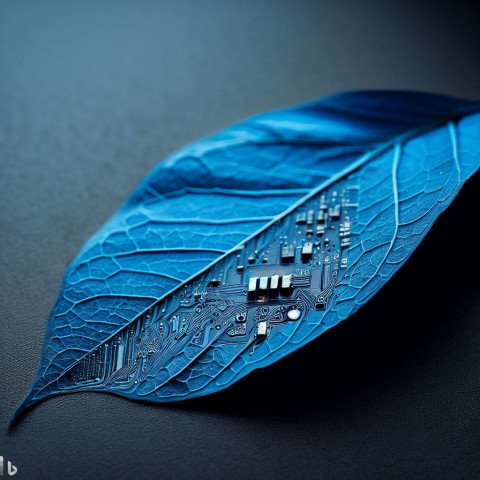CSIC is creating a new technology to make the future's solar energy quantum and with temperature self-regulation

Research groups from the Institute of Materials Science in Madrid (ICMM-CSIC) and the Institute of Optics (IO-CSIC) are participating in the European project ADAPTATION, which draws inspiration from nature to create new devices that will facilitate adaptation to changes caused by the climate crisis. These devices will absorb solar energy to convert it into electricity while also being capable of self-cooling, thereby avoiding energy losses.
They will achieve this sustainably through a European consortium led by the Iberian Peninsula through CSIC, the University of Minho, the International Iberian Nanotechnology (INL) in Braga, and the University of Vigo.
When thinking about any device that absorbs energy to produce electricity (such as a solar panel), it is easy to understand that it loses efficiency when it heats up. This is because, typically, "the integration of photovoltaic or solar energy capture technologies is incompatible with technologies that allow efficient temperature management," explains Pedro David García, a researcher at ICMM-CSIC. In response to this, the consortium seeks a groundbreaking solution: "Combine everything into a single material: achieve good thermal response with optimized solar energy capture."
To achieve this, they will use a novel concept: quantum biology, inspired by non-trivial quantum phenomena that occur in photosynthesis. Sara Núñez-Sánchez, project coordinator from the University of Minho in Portugal, explains that the survival of plants does not depend so much on the amount of energy they absorb but on how efficiently they transport that energy due to non-trivial quantum phenomena. This mechanism is what the project aims to mimic, creating a new concept for a solar energy conversion device.
In ADAPTATION, they will work by mimicking at the molecular level how natural photosynthetic tissue is organized to generate new materials that will be the basis of an innovative device. This device will consist of various nanometric structures with the necessary properties for energy absorption and transport, as well as thermal control. "All the structures we will use have their origin in nature in one way or another, as we will be inspired by natural systems and also directly use these nanostructures from nature in the devices," adds Martín López, a researcher at INL, also involved in the project.
Cooling down without spending energy
"At IO-CSIC, we will characterize the materials to elucidate their properties, so that we can use them to design real devices," says Rosalía Serna, a researcher at IO-CSIC. "We will study what types of nanostructures are most suitable and how light interacts with the material," adds López, who will join the IO shortly.
Once the first objective of efficiently absorbing and transporting energy to produce electricity is achieved, the second goal of ADAPTATION remains: that the device is capable of 'radiative cooling' without energy consumption. In other words, it should be able to cool itself without energy expenditure. To achieve this, researchers will reproduce the process that the Earth undergoes, for example, in the desert. "Cooling things makes them more efficient always," emphasizes García.
The nanodevices developed in ADAPTATION will be flexible and can be applied to the surfaces of objects like paint. By covering urban elements such as cars or houses, they will provide energy to these objects while controlling their temperature, allowing them to adapt to the climatic needs of each region. Researchers highlight that this would address many current energy problems and several challenges of the 2030 agenda.
"We will establish the foundations of a new technology that will have an impact beyond energy management technologies, such as how we transport information more sustainably, thus reducing our dependence on critical materials," concludes Núñez from Braga, Portugal.
The 'ADAPTATION' project has received 3.6 million euros through the Pathfinder grants from the European Union, aimed at disruptive projects investigating and developing technological advances. Nine entities from five different countries will participate in its execution, with special prominence given to the Iberian Peninsula: the University of Minho (coordinator) and the International Iberian Nanotechnology Laboratory (INL) from Portugal; CSIC, the University of Vigo, Avanzare Innovation Tecnologica SL, and Cooling Photonics from Spain; the University of Strasbourg (France), the University of Utrecht (Netherlands), and Sunplugged-solare Energiesysteme GMBH from Austria.
Instituto de Ciencia de Materiales de Madrid (ICMM)
Sor Juana Ines de la Cruz, 3
Cantoblanco, 28049
Madrid, España
Telephone: (+34) 91 334 90 00
Email: @email
Communication Office: @email

Acknowledge the Severo Ochoa Centres of Excellence program through Grant CEX2024-001445-S/ financiado por MICIU/AEI / 10.13039/501100011033

Contacto | Accesibilidad | Aviso legal | Política de Cookies | Protección de datos